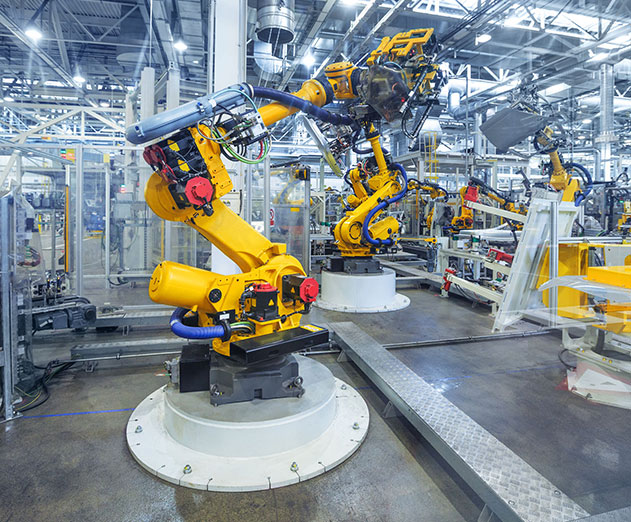DevOps
Why release automation is critical in the application lifecycle
Wednesday, November 2, 2016

|
Richard Harris |
We all know application release automation is a growing area in DevOps, and Gartner has finally acknowledged that by issuing a brand new Magic Quadrant. The Gartner Magic Quadrant for Application Release Automation states that this market is poised for growth, with a projected CAGR of 20% through 2020.
CA Technologies was recently named a leader in the report for its CA Release Automation product. So we recently sat down with Jeff Scheaffer, General Manager, Continuous Delivery, CA Technologies to discuss why release automation tools are critical in the application lifecycle.
- A visual platform to define, manage and coordinate the deployment of hundreds of complex release pipelines by abstracting the release artifacts (the WHAT), deployment logic (the HOW), and the environments (the WHERE) in order to provide the utmost in reusability and consistency of the overall release process.
- An open architecture that provides a broad set of highly functional integrations that can also be easily customized to suit an organization’s specific requirements.
- A dashboard with real-time metrics, historical analytics, and governance.
- Scalability to handle multiple, complex concurrent release cycles across a large number of development organizations.
- A vendor with a solid track record of helping organizations transition to DevOps methodologies by providing best practices that fit organizational needs.
- Automating the code pipeline to break down silos and orchestrate the entire software development lifecycle from planning to production.
- Standardizing multiple deployment patterns and ensuring consistency, traceability, and quality of the release process while reducing errors.
- Reducing complexity by automatically determining the optimal deployment of simple or complex applications built on microservices (dependency mapping, conflict resolution).
- Providing analytics for continuous improvement of the software development lifecycle to help organizations achieve the goal of “code to test to production in 10 minutes or less.”
- Identify executive sponsors. You’ll need executive sponsors focused on increasing business performance and evolving the organization through digital transformation.
- Start with one project. Select a key pressure point, address it, and move on after a successful implementation. Allow success to be a proof point for more success.
- Engage across-functional team. ARA impact steams across the entire software development life cycle so it is critical to engage stakeholders across teams from planning to production.
- Select the right ARA provider that provides all of the dimensions described above: best practices; deployment models; support across traditional, private, and public cloud; depth and breadth of integrations; the analytics to support continuous improvement; and scalability to support a large volume of complex, concurrent releases.

The desire to embrace DevOps principles such as removing silos, automating as much as possible and rapid feedback is really key to success. The benefits of an ARA solution are huge, but continuous delivery isn’t something you can achieve with ARA alone. To be successful, there’s both technical and cultural transformation that needs to happen.
- Analytics are taking center stage. As companies increase release volume, while increasing quality and reducing risk, comprehensive pipeline visibility and detailed analytics are imperative for continuous improvement.
- Shifting quality left. Building automated testing and feedback loops into the pipeline allows organizations to fix problems faster, with less time and cost.
- Organizational cohesiveness. We’re seeing organizations with cross-departmental teams and executive sponsorship committed to eliminating silos and adopting the fully automated application delivery pipeline. Companies are looking for trusted advisors to partner with them through the Agile-DevOps-Continuous Delivery transformation—and to support that journey with world class products and services.
Read more: http://appdevelopermagazine.com/partner/link/?ref=...
CA Technologies was recently named a leader in the report for its CA Release Automation product. So we recently sat down with Jeff Scheaffer, General Manager, Continuous Delivery, CA Technologies to discuss why release automation tools are critical in the application lifecycle.
ADM: By 2020, 50% of global enterprises will have implemented at least one application release automation (ARA) solution, up from less than 10% today – what is driving this growth?
Scheaffer: In the application economy, a company promotes its brand, products, and services through its web and mobile applications. Competitive advantage depends on the ability to deliver quality apps at speed, with dramatically lower risk and cost. To do this, enterprises need the automation, visibility, and pipeline analytics provided by an ARA solution. ARA leads to dramatic results. For example, we’ve seen our customers achieve ROIs of almost 400%, decrease errors by 98%, and improve deployments by 20 times through the use of our continuous delivery solutions from our DevOps portfolio.ADM: What should enterprises look for when they invest in ARA solutions?
Scheaffer: First and foremost, any ARA solution for enterprise companies should provide:- A visual platform to define, manage and coordinate the deployment of hundreds of complex release pipelines by abstracting the release artifacts (the WHAT), deployment logic (the HOW), and the environments (the WHERE) in order to provide the utmost in reusability and consistency of the overall release process.
- An open architecture that provides a broad set of highly functional integrations that can also be easily customized to suit an organization’s specific requirements.
- A dashboard with real-time metrics, historical analytics, and governance.
- Scalability to handle multiple, complex concurrent release cycles across a large number of development organizations.
- A vendor with a solid track record of helping organizations transition to DevOps methodologies by providing best practices that fit organizational needs.
ADM: How can agile organizations leverage Application Release Automation (ARA) to bring products to market more quickly?
Scheaffer: ARA changes the game by helping companies deliver innovative functionality faster by:- Automating the code pipeline to break down silos and orchestrate the entire software development lifecycle from planning to production.
- Standardizing multiple deployment patterns and ensuring consistency, traceability, and quality of the release process while reducing errors.
- Reducing complexity by automatically determining the optimal deployment of simple or complex applications built on microservices (dependency mapping, conflict resolution).
- Providing analytics for continuous improvement of the software development lifecycle to help organizations achieve the goal of “code to test to production in 10 minutes or less.”
ADM: What are some tips for success while using ARA?
Scheaffer: ARA is transformational. To be successful, organizations need to be ready to embrace change. To start the process organizations need to:- Identify executive sponsors. You’ll need executive sponsors focused on increasing business performance and evolving the organization through digital transformation.
- Start with one project. Select a key pressure point, address it, and move on after a successful implementation. Allow success to be a proof point for more success.
- Engage across-functional team. ARA impact steams across the entire software development life cycle so it is critical to engage stakeholders across teams from planning to production.
- Select the right ARA provider that provides all of the dimensions described above: best practices; deployment models; support across traditional, private, and public cloud; depth and breadth of integrations; the analytics to support continuous improvement; and scalability to support a large volume of complex, concurrent releases.

ADM: What challenges are most difficult for organizations to overcome who are new to ARA?
Scheaffer: Customers often tell us that their biggest challenge centers around culture and change management. Continuous delivery is a technical and a cultural shift. Very often, teams resist change because they are comfortable with current roles, tools and processes.They might be stretching the capabilities of continuous integration or infrastructure management tools to do some automation, and that’s perceived as good enough. And, if the organization is using waterfall or a partial agile process with manual steps, they may feel uncomfortable transitioning to“zero-touch” orchestration. There is a perceived loss of control, even though, in reality, there’s much more visibility and control with ARA.The desire to embrace DevOps principles such as removing silos, automating as much as possible and rapid feedback is really key to success. The benefits of an ARA solution are huge, but continuous delivery isn’t something you can achieve with ARA alone. To be successful, there’s both technical and cultural transformation that needs to happen.
ADM: What other trends are you seeing in the continuous delivery space?
Scheaffer: To compete and succeed in today’s application economy, organizations are being driven to introduce applications faster, at higher quality, and lower cost. Continuous delivery isn’t just a cutting edge approach for unicorns, it’s the way today’s companies stay competitive. Some key trends I’m seeing include:- Analytics are taking center stage. As companies increase release volume, while increasing quality and reducing risk, comprehensive pipeline visibility and detailed analytics are imperative for continuous improvement.
- Shifting quality left. Building automated testing and feedback loops into the pipeline allows organizations to fix problems faster, with less time and cost.
- Organizational cohesiveness. We’re seeing organizations with cross-departmental teams and executive sponsorship committed to eliminating silos and adopting the fully automated application delivery pipeline. Companies are looking for trusted advisors to partner with them through the Agile-DevOps-Continuous Delivery transformation—and to support that journey with world class products and services.
Read more: http://appdevelopermagazine.com/partner/link/?ref=...

Become a subscriber of App Developer Magazine for just $5.99 a month and take advantage of all these perks.
MEMBERS GET ACCESS TO
- - Exclusive content from leaders in the industry
- - Q&A articles from industry leaders
- - Tips and tricks from the most successful developers weekly
- - Monthly issues, including all 90+ back-issues since 2012
- - Event discounts and early-bird signups
- - Gain insight from top achievers in the app store
- - Learn what tools to use, what SDK's to use, and more
Subscribe here









